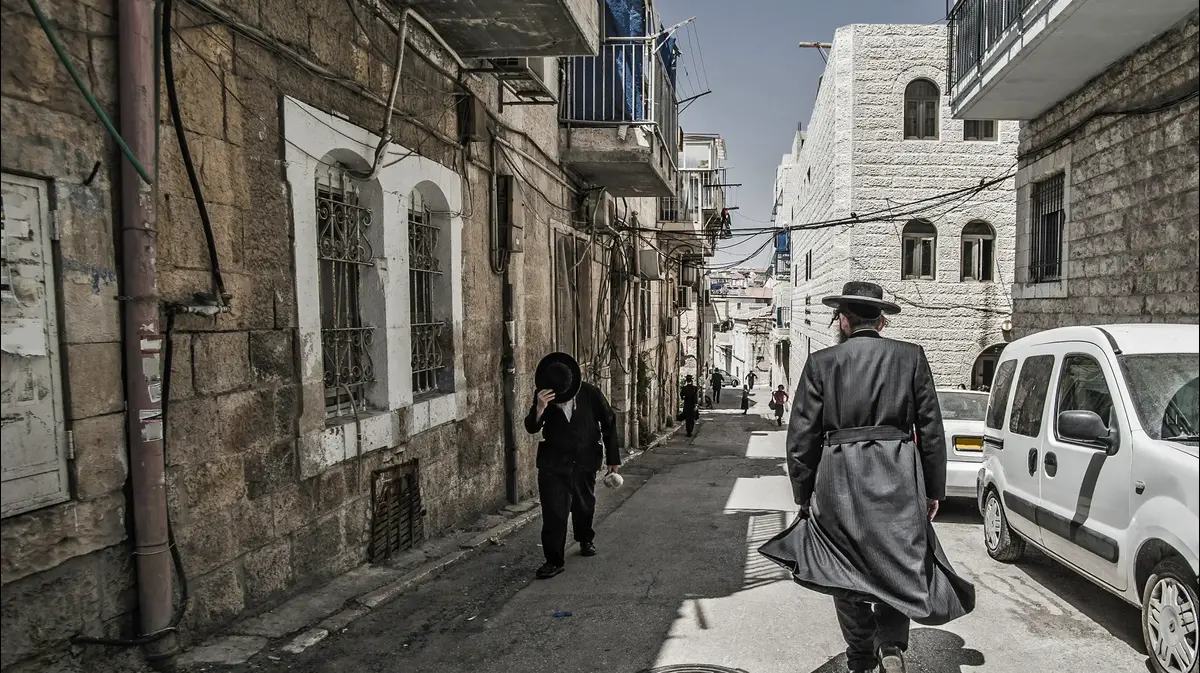HMO clutter
"A large density of patients in the corridors and ongoing waiting times for medical treatment - all of these create a great burden on the health funds," Health Minister Haim Moshe Shapira warned at a press conference in Tel Aviv in mid-September 1951, after visiting several HMO branches in the city.
"For a long time now, I have been demanding an additional 400 standards for doctors in the government, but until a new government is formed in Israel, there is no one to talk to," the minister said in the dramatic speech at the event.
Dr. Alex Levy, director of the Tel Aviv Medical Association, surprised at the press conference when he said that "the problem the minister is talking about could have been solved long ago, if the Ministry of Health had made necessary organizational changes regarding members' visits to HMO branches."
A statistical study conducted by Dr. Levy found that about 45 percent of HMO clinics come not because of illness or pain, but to arrange for themselves a certificate or some kind of certificate. "The third wants a signed medical document confirming that he is exempt from queuing - and more and more," said Dr. Levy.
From a long list of statistics collected in his study, Dr. Levy concluded that applications for various medical certificates are a burden on the medical system, "since the physician can not approve or reject the application, and each applicant is sent for a series of tests to prove or deny the reasons. The request. "
The solution, according to Levy, is "to make a complete separation between a medical department and an administrative department. The doctor will be able to focus on treating the patient, while experienced clerks and nurses will find out early if the member is requesting a 'true request', or just trying to squeeze out the medical system."
Over the years, many readers have approached and asked to locate the "picture of the nurse seeking to keep quiet" (left), which hung in many corridors at the HMOs. After a long search, the picture was found on the "Cities and Kibbutzim" page on Facebook, and now we are asking you, readers of the section, for information about the photographed nurse: Do you know who she is and what happened to her? Send to us at: Yor@ShmurIsrael.Org
To raise donations from the US: "Industry Week"
"Industry Week" poster, 1951, Photo: Courtesy of the Central Zionist Archive
In mid-September 1951, many industrial plants in the Haifa and northern areas began receiving urgent phone calls from the Prime Minister's Office in Jerusalem, in which the plant managers were ordered to prepare for "Industrial Week" - which was hastily organized and planned to be launched towards the end of that month.
The reason for the panic came from a distance, from Washington: four months earlier, in May 1951, the Prime Minister, David Ben-Gurion, arrived in the United States to promote the launch of the "Independence Lender" project, which was intended to raise loans from Israel for 30-20 years. .
The start of the lender project looked promising: Ben-Gurion honored his presence for three weeks, on an El Al plane attached to it, conferences designed to encourage Jewish communities in 16 major cities in the United States to participate in the Lender Independence. Thousands of enthusiastic Jews waited for him everywhere , And some opened their hearts and pockets and purchased bonds in high amounts.
However, with Ben-Gurion's departure from the United States, enthusiasm among communities waned, and the Washington Accompanying Committee devised a way to excite American Jewry by showcasing the impressive industrial achievements of young Israel.
Haifa, already a city with a high concentration of industrial plants, was chosen to be the focus of the event: the consulate in Washington quickly recruited dozens of journalists, who were flown to Israel, and in the following weeks the Jewish press in the United States published articles about Israel's "impressive industrial development." Accompanied by independence by their side.
At the same time, articles were published claiming that Industry Week was only "propaganda", and that the new "Tires General" tire factory in Petah Tikva, for example, which Ben-Gurion launched during it, was in fact 18 months away from operating.
In addition, it is claimed that the cost of production in Israel is high compared to Europe, and therefore "Israeli industrial products do not have much chance in foreign markets."
The mosquitoes conquered Jerusalem
Advertisement for an insecticide, 1950s, Photo: Design: The Shamir Brothers
In the second half of September 1951, the residents of Jerusalem began to suffer a troublesome attack of millions of mosquitoes.
All attempts by the municipality to eradicate the lesion were in vain, and it announced that "at this stage, the only means of combating mosquito is to install nets on the windows."
The problem was that the chain's inventory had long since run out, not only in stores but also on the black market, and no one knew when their supply would be renewed.
The situation was particularly difficult for the tourists, who filled all the hotels and guest houses in the capital during the busy Tishrei holidays.
The district doctor, Dr. Soriano, announced that the main reason for the severe attack of mosquitoes is the fact that over the past year the tin lids above some of the water boilers (which were placed on every roof at the time) have disappeared or been stolen, and the exposed boilers are mosquito incubators.
The sanitation department's attempt to purify the boilers with chemicals was also to no avail - and also created a factory of rumors in the city that these chemicals are the cause, so to speak, of contracting polio.
A group of angry residents gathered in front of the town hall and threw stones that shattered many windows.
For weeks, the municipality's sanitation department, together with experts from the Ministry of Health, tried to find a solution to the mosquito plague, but to no avail.
One senior city official, who asked to remain anonymous, told the Davar newspaper: "We have given up! All that is left is to wait for the cool autumn days, hoping the cold will kill the mosquitoes. For our part, everything we do seems to make mosquitoes thrive."
Haifa respects the elderly
Operation poster "Excluding the face of an old man", 1951, Photo: Source: Haifa Municipality
On September 20, 1951, the Haifa Municipality launched a beautiful social campaign called "Exclusion of the Old Man's Face", in order to allow hundreds of seniors residents of Haifa to tour the country in private cars for one day, during the week of Sukkot.
The mayor of Haifa, Abba Hushi, wrote in personal letters to the owners of the 2,300 private cars that drove in and around the city at the time, and asked to make them available to the municipality for one day, for tours where, according to the plan, the car owners will serve as drivers and guides.
The announcement states that registration stations in the city will open in the coming days.
On the day of the tour, scheduled for October 17, convoys of 20 cars each will depart for various sites - from Hadera to Metula.
The students went down to the Negev
At the graduation party at the Hebrew University of Jerusalem, hosted by students from the Mapai cell, the party's representative suggested that young people consider committing an "important Zionist act", instead of spending their time idle on the beach until their return to the next school year. Ideas for a "Zionist act" worth carrying out. The selected program included joining hundreds of new immigrants who worked in the Negev on the breakthrough to Sodom.
Jobs: Blondes for the parade
In mid-September 1951, the Israel Police "raided" the streets of central Jerusalem to locate guys with blonde hair.
The reason: That morning a young blond man was brought in who was accused of breaking into an apartment in the city.
He was captured by the police, who invited the landlords to identify him in the parade, but at the time of the designation it turned out that in the yard of the Russian lot, the residence of the police station, only the burglar stood in the identification parade - and another blond guy.
After five hours of searching, the police located eight more blondes - who were brought in to "fill in" the identification order, as required.
The missing / events that were
The singer
Courtesy of the Government Medals and Coins Company,
An international conference of professional alumni choirs from all over the world, who came to Israel every three years during the summer months, were hosted in kibbutzim and cities and performed a series of concerts that were open to the general public.
The factory also provided an opportunity for local Israeli choirs, such as "Rinat" and "Tzadikov", for adults and children, to demonstrate their ability to the public.
The "Singing" took place in succession from 1952 to 1975, and has been renewed in recent years.
The grocery store / drinks from time immemorial
"Zip" powder
Photo: Nostalgia Online Archive,
It has been 40 years since the powdered drink invented in America and marketed in tin cans burst into our lives in Israel.
Using a plastic gauge we would pour into a jug of cold water a heaping tablespoon of powder and mix well.
The "zip" is marketed in various chemical flavors, including oranges, grapefruit, lemons and apples - which did not really resemble the taste of real fruit.
The drink, which was a hit in the 1980s, has disappeared from our lives as awareness of healthier consumption increases.
"Work villages" for new immigrants
Immigrants from Romania in the labor village of Tarshiha, 1951, Photo: Photo from the S. Steiner archives
In the years 1951-1949, the government and the Jewish Agency established dozens of labor villages in the mountainous periphery, with the aim of easing the pressure on the immigrant camps.
These were new villages, or Arab villages that had been abandoned and retrained for the residence of the immigrants.
The government has promised settlers public works for at least five years.
In September 1951, following press tours, many mocking articles were published against the idea and its implementation, but in retrospect it turns out that most of the labor villages have become prosperous settlements, such as Poria, Gideona, Tzuriel and more.
In the photo: immigrants from Romania in the labor village of Tarshiha, 1951.
Ads that were
Do you have pictures or souvenirs from the first days of the country? Write to us: Yor@ShimurIsrael.Org









